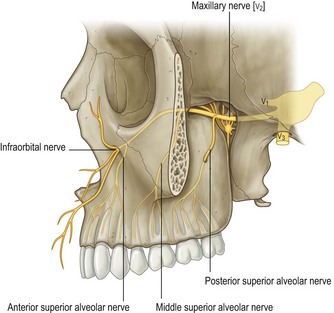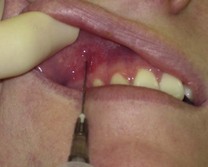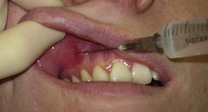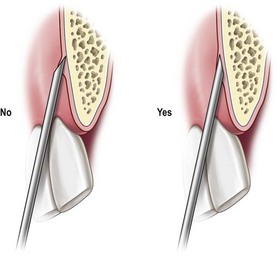CHAPTER 4 Basic dental and oral local anaesthesia
Local anaesthesia for the maxillary dentition
Supraperiosteal or infiltration local anaesthesia
The maxillary teeth are innervated via a network of nerves originating from the maxillary nerve and the infraorbital nerve (Fig. 4.1). These nerves run in the cancellous bone of the maxilla, superior to the roots of the maxillary teeth. The lateral cortical plate of the maxillary alveolus is usually sufficiently thin and porous to allow for effective infiltration (supraperiosteal) local anaesthesia. This technique is not recommended for more than two adjacent teeth or when local infection or inflammation is present. To accomplish this, local anaesthetic is infiltrated along the buccal-gingival fold adjacent to the area to be blocked (e.g. adjacent to the first molar if that tooth is painful from infection or injury).
Technique
Tips for the non-dentist
Intraoral infraorbital nerve block
The infraorbital foramen can easily be identified using ultrasound to establish its exact position.
Technique
Stay updated, free articles. Join our Telegram channel

Full access? Get Clinical Tree












